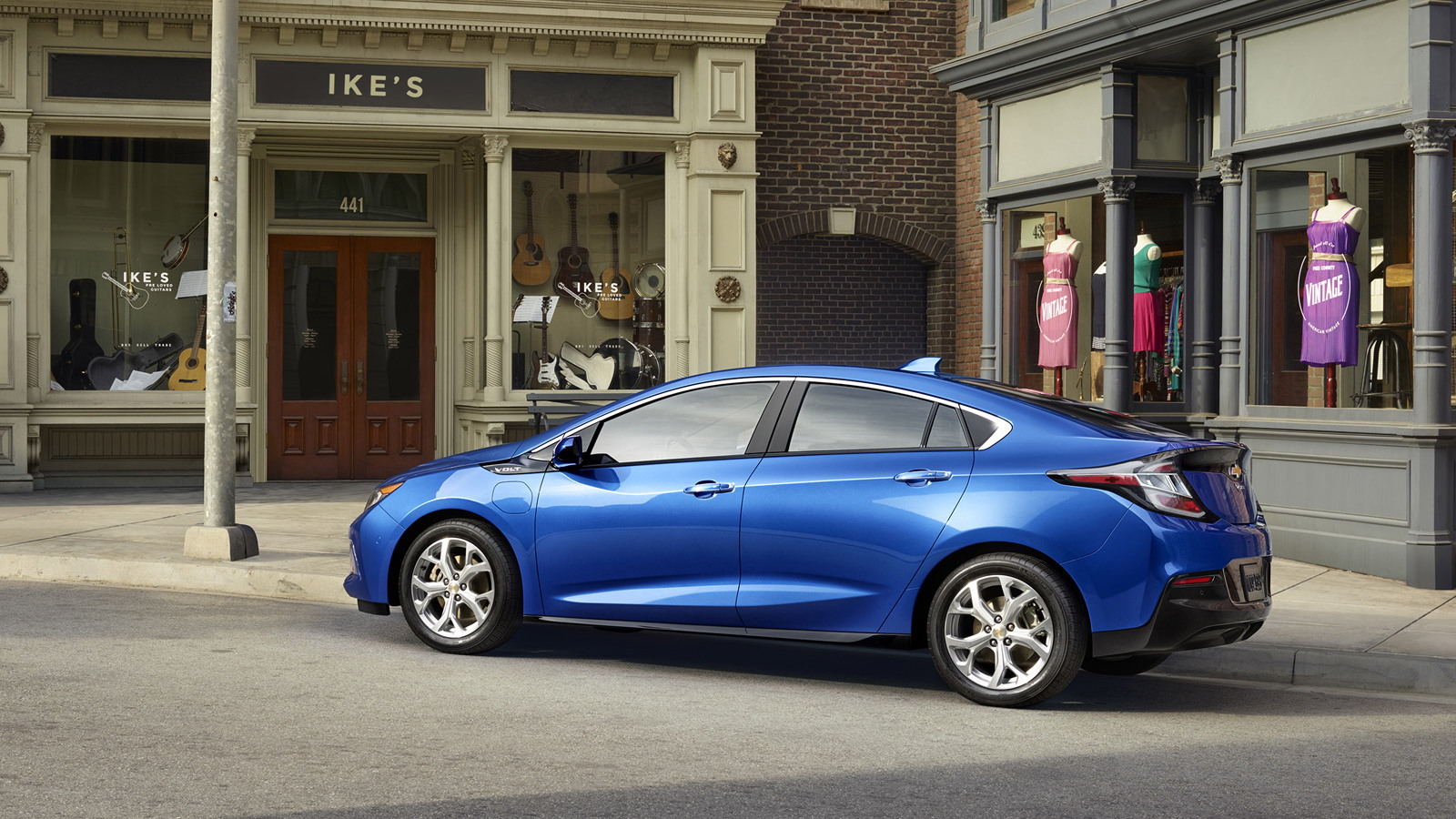
Low-rolling resistance Goodyear Fuel Max tires on lightweight aluminum wheels, electro-hydraulic generative braking and optimized aerodynamics are features maximizing the momentum of the Volt. Maximum traveling range of the Chevrolet Volt using electric and gasoline power was rated at 379 miles. The gasoline engine (referred to as a range extender), was an 84-horsepower, 1.4-liter four-cylinder powerplant. The T-shaped battery of the Volt could be charged in as little as four hours when connected through a 240-volt power outlet. The compact sedan’s electric Voltec propulsion system consisted of a 16-kiloWatt hour lithium-ion battery pack and a pair of electrical motors generating a combined output equivalent to 149 horsepower. For up to 35 miles, the 2011 Chevrolet Volt could travel solely on electrical power. Becoming the first mass-produced electric car fitted with a backup gasoline engine sold by a major automaker, the Volt became available in 2011. Ewanick said.Introduced as a concept car in 2007, the plug-in hybrid Chevrolet Volt garnered a lot of publicity that eventually led to a production version of the alternative powertrain vehicle to emerge. “This vehicle comes with the highest degree of training requirements of any vehicle launched in the history of General Motors,” Mr. limited the Volt’s introduction to six states and Washington, so that it could train dealership personnel to properly educate buyers and to service the Volt.

People who live outside the areas where it will initially go on sale can buy the vehicle if they travel to a participating dealer, but they will not be allowed to lease it until sales are expanded nationwide by 2012, G.M. Only 600 Chevrolet dealers in G.M.’s initial markets will be able to sell the Volt at first. hopes the Volt will improve its reputation among environmentally conscious consumers and demonstrate the capabilities of battery-powered vehicles, eventually generating earnings as the technology becomes less expensive. does not expect to earn a profit from early generations of the vehicle, which even after the tax credit costs twice as much as the anticipated similar-size Chevrolet Cruze. Nissan said in May that the Leaf was already sold out for this year, with 13,000 preorders in the United States. “We’ve already got more orders than we’ve got cars.” “Between this year and next year we’re only getting 10 or 12,” Yale Kahan, the general sales manager at Boardwalk Chevrolet in Redwood City, Calif., said. “It actually starts to make sense for someone in Ohio, versus Leonardo DiCaprio in Southern California.” “Pretty much anybody that’s in the market for a new car can afford this payment,” Mr. Toprak of said he expected at least 60 percent of the cars to be leased, though leasing would be limited at first. Including payments due at delivery, lessees would pay $349 a month for the base model of the Leaf, or $14,563 over three years, and $15,100 over three years for the Volt.

In the case of leases, the leasing company is eligible to claim the credit. The credit, which buyers must claim when filing their tax return, begins to phase out after 200,000 qualifying vehicles are made. and Nissan are counting on the government’s $7,500 tax credit for plug-in cars to go a long way toward making their vehicles more affordable.

“The Volt can replace your existing commuter car or even your family car, if you don’t have a big family, and do just fine.”īoth G.M. “The Leaf is a second or third car,” he said. Jesse Toprak, vice president for vehicle trends and insights at, a Web site that tracks vehicle prices, said the Leaf and Volt were largely aiming at different sets of consumers, and call for prices thousands of dollars apart.


 0 kommentar(er)
0 kommentar(er)
